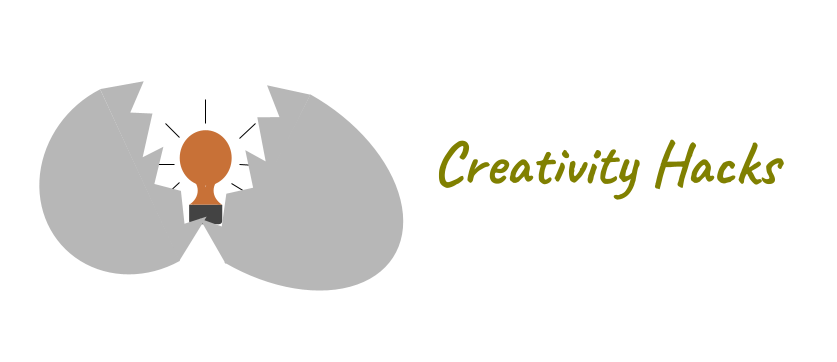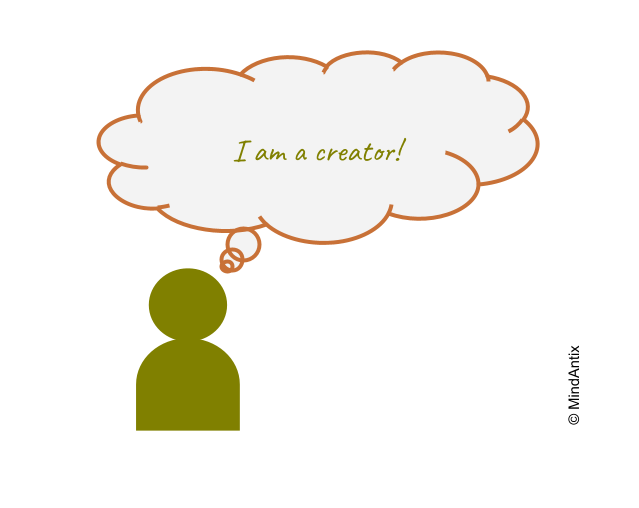While working with students, I often encounter children who struggle to think beyond gender-stereotypical ideas during brainstorming. When deciding on a novel idea for a project, many boys will want to make an app but can’t come up with a novel idea for the app. They get so hung up on using technology to look cool, that they lose sight of the challenge itself and end up with sub-par ideas (an example is an “app that does all the homework” is way too common to hear). The same problem happens, in equal measure, with girls too. Girls often pick ideas to highlight their nurturing or relationship-building aspects, and leave the better ones aside.
Multiple research studies have tried to evaluate whether any particular gender has an advantage when it comes to creative thinking, and the meta results have been inconclusive. Some studies found that girls performed better on divergent thinking while others found boys to be better, or found no differences. It’s now well accepted in the research community that no one gender is better than the other when it comes to creative thinking. In other words, from a purely biological perspective both boys and girls are equally capable of coming up with novel and useful ideas.
However, the problem starts when gender stereotypes start sneaking in and limiting the ways people think, which can happen at a very early age. Psychologist Sandra Bem who developed the Gender Schema Theory, argued that society does not encourage the development of both masculine and feminine traits in the same person. From a very young age, children develop theories of what it means to belong to a specific gender, and use that to categorize information, problem solve and regulate behavior. As a result, they are left with fewer tools and strategies to use for navigating situations in life.
On the other hand, children who grow up to be more gender-aschematic and identify with both masculine and feminine characteristics, show a range of beneficial outcomes. They think and act in more inclusive ways, have higher self esteem and are better communicators. This psychological androgyny (which has nothing to do with physical sexual orientation) is also important from a creativity perspective.
In one study, researchers evaluated several creativity measures for different gender role classifications: androgynous (high masculinity and high femininity); stereotypic (characteristics in line with one’s traditional gender role); undifferentiated (low masculinity and low femininity); retrotypic (characteristics opposite of one’s traditional gender role); and midmost (middle range for both masculinity and femininity). They found that the androgynous group was the most creative of all, closely followed by the retrotypic group while the stereotypic group was the least creative of all. One possible explanation for these results is that both the androgynous and the retrotypic groups are able to overcome gender boundaries and this expanded cognitive flexibility gives them access to additional ideas and perspectives. As the researchers note, “Possibly the contrast between biological gender with a traditional role-assignment and psychological orientation with an untraditional role-assignment (i.e. a feminine man or a masculine woman) was sufficient to induce conditions facilitatory to the release of creativity. It is arguable whether or not retrotypic men and women possess similar penchants to their androgynic counterparts to cross the boundaries of traditional gender-roles thereby accumulating experiential material with elevated flexibility and creativity as a consequence.”
Encouraging more androgynous behaviours is not just benefical socially, it is also a sign of higher creativity and intelligence. So how can one build these skills from an early age? Here are three strategies that can foster psychological androgyny:
Independent Thinking: There is an inherent safety in sticking to socially acceptable and stereotypical ideas. One of the most important things educators and parents can do is to build independent thinking in their students. By proposing ideas that are different from their peers, students start to build confidence in their own ability to think critically and creativity. This same confidence then helps them jump across gender boundaries at a later point.
Encourage Perspective Taking: When a child suggests an idea or a solution, have them explore the idea from multiple different perspectives. How would this idea be received by the opposite gender or more broadly by other groups? Would this be as useful for them as for you? Why or why not? By approaching an idea from different perspectives, you not only improve cognitive flexibility but also shift focus on broader values that affect everyone.
Appreciate Gender-boundary Crossing: Parents and educators should pay attention when a child engages in activity typically associated with the opposite gender, like a boy wanting to bake cookies or a girl interested in climbing trees. These moments reflect a child’s confidence in going beyond gender stereotypes and when appreciated it motivates them to continue down this path.
People who are able to transcend gender boundaries don’t feel boxed in by cultural and social constraints. They are able to find more inclusive as well as more creative solutions. By encouraging skills like independent thinking and perspective taking from an early age, educators can help students become more creative, more confident and more inclusive.
This article first appeared on edCircuit.




